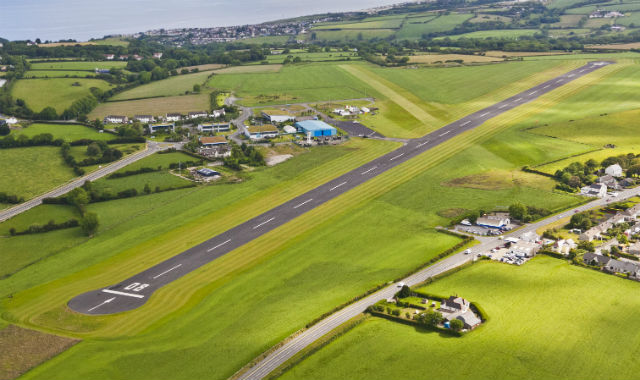Two regional UK airports have formalised a plan to offer development, test and evaluation and training facilities for the unmanned air system sector, with the National Aeronautical Centre (NAC) now seeking to attract additional customers.
Advanced following a first discussion held at the Farnborough air show last year, the NAC initiative involves West Wales airport at Aberporth (below) and Newquay Cornwall airport. Already the home for flight testing of the British Army's Thales UK/Elbit Systems Watcheeper UAS, the former has also hosted trials of the Selex ES Falco, along with smaller types from additional companies.
 |
|---|
West Wales airport |
Speaking during a launch event at the Royal Society in London on 9 September, West Wales airport owner Ray Mann said the technology is available to enable commercial operations involving unmanned cargo aircraft to start within as little as five years. "With the NAC established, the UK already has the necessary sanitised environment where regulated operations can be carried out", in support of such an advance, he believes.
"The next generation of aerospace is upon us, and the idea for what we have is to get them beyond segregation," says Mann. "We hope that our vision will deliver the rewards."
Newquay Cornwall airport, which has yet to request the required airspace change to allow UAS to take off and transit to a nearby over-water test area, is also seeking to attract firms through tax breaks available via the Aerohub enterprise zone scheme.
Describing the NAC's formation as "a bold and exciting step", Richard Deakin, chief executive of UK air navigation service provider NATS, comments: "I am confident that we can integrate unmanned air systems fully into controlled airspace."
Work conducted to date using the Watchkeeper in "Class G" airspace has seen initial air traffic separation limits of 10nm (19km) and 2,000ft (610m) reduced to 5nm lateral and 1,000ft vertical - "exactly the same as a manned aircraft", he notes.
Meanwhile, Deakin revealed that a flight test activity will be performed in the UK in mid-2014 under the guise of the Single European Sky air traffic management initiative. To be conducted in segregated airspace following take-off from West Wales airport, the activity will involve a Watchkeeper UAV. The process is intended to assess whether an unmanned system could be used in future civilian applications, such as search and rescue or fisheries protection.
Source: Flight International























